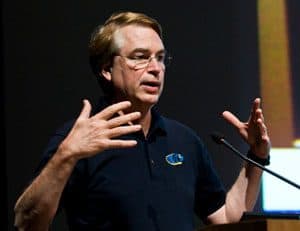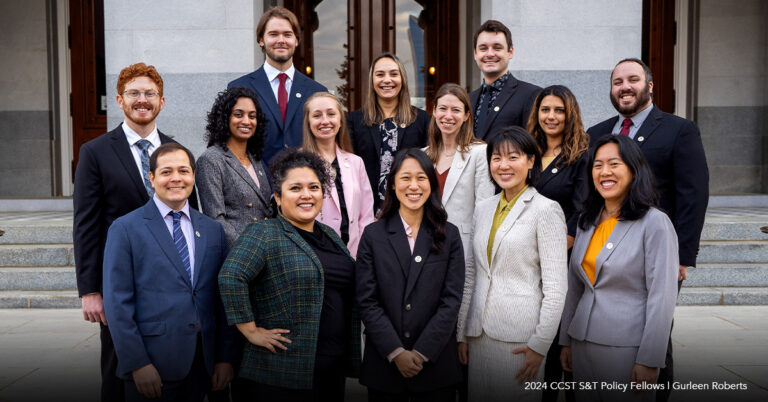Update: Applications for the CCST Science & Technology Policy Fellowship Have Closed
Calit2 Director Sees Healthcare on Cusp of Breakthrough
March 1, 2012 | CCST Newsroom | Contact: M. Daniel DeCillis

Physicist and supercomputer expert Larry Smarr is known for big, forward-thinking ideas about the future needs of scientific research. The initiator of an unsolicited National Science Foundation proposal that led to the creation of five supercomputer centers and onetime director of the National Computational Science Alliance, Smarr has been directing the inter-institutional California Institute for Telecommunications and Information Technology (Calit2) since its inception in 2000. As part of the work of Calit2, he was Principal Investigator on the NSF OptIPuter LambdaGrid project, which aims to develop planetary scale distributed computing, one of the largest National Science Foundation computer science research grants in the last decade.
Lately, however, he has been making headlines for a different, more intimate technological vision: the transformation of his own healthcare.
“Thanks to an astounding convergent spiral of nanotechnology, information technology, and biomedical technology each reinforcing the other, we are now in a position to quantify the self as never before,” said Smarr. “Calit2 has had a vision of the digital transformation of health for a decade, and we are now seeing that vision come to fruition.”
Smarr has been tracking, and sharing data on, the state of his own health for ten years. He uses a variety of devices to track vital statistics – ranging from a Fitbit to count his every step, a Zeo to track his sleep patterns, and a Polar WearLink that lets him regulate his maximum heart rate during exercise. He has also had his DNA analyzed for disease susceptibility and employs a service to regularly analyze blood and stool samples. As a result, he has a wealth of longitudinal data on key biomarkers – data that helped him correctly diagnose the emergence of a chronic disease.
“In just ten years, I have gone from one data point – my weight on the scale – to a billion data points – my full genome – defining me,” said Smarr. “It’s a scope and scale of information far beyond what could have been envisioned even a few years ago.”
Smarr contends that digitally enabled genomic medicine is poised to transform medical care in an unprecedented way.
“The feasibility of this approach has advanced at a staggering rate,” said Smarr. “In the last decade the cost of the genomic analysis of a human DNA has come down from billions of dollars to thousands. It’s a rate of change that has never happened before in human history. We are on the cusp of transforming the relationship between doctor and patient, enhancing it to an unprecedented degree.”
The transformation, however, is not just about collecting data in novel ways, but being able to analyze it, effectively data mining with the help of sophisticated artificial intelligence techniques and continuing to advance biomedical and information technologies.
“Our universities are critical to this effort,” said Smarr. “California is unique in the world in having not only the vast array of innovative Silicon Valley companies, but also its unmatched research university community investing in the necessary data-intensive research and the digital infrastructure required to support it. UC Davis, for example, has just entered into a partnership that will change the landscape of genomic sciences in California and the Western states by establishing a joint facility with BGI, the world’s largest genomics sequencing organization.”
Just entering its second decade, Calit2 has already made substantial inroads in addressing large-scale societal issues with its multidisciplinary approach encompassing nanotechnology, life sciences, information technology, and telecommunications. For Smarr, however, it is still only the beginning of a transformative era in which vast amounts of data – collected individually, analyzed longitudinally and across the human population – will shape our future lives.
“For thousands of years, the question you are asked by your doctor has been, ‘how do you feel?'” he said. “It is being replaced by, ‘what are your data trends ?'”






